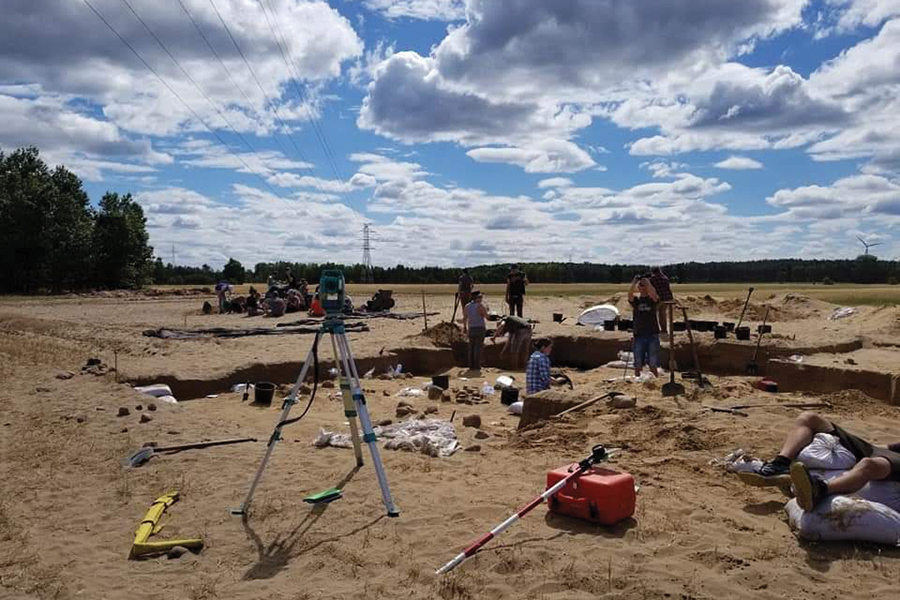
Part four of a continuing series about experiences on an archaeological dig in Poland
Have you ever built an arrowhead made of obsidian or a hide scraper made from chert? It can be easy to think of stone tools as “primitive” or dismiss them as crude things made from rocks by ancient peoples and Neanderthals. Although stone tools are created from one of the most abundant items on earth, rocks, making them is quite a bit harder than one would think.
This summer I participated in the Slavia Foundation’s archaeological field school. We
excavated both Bronze Age (IV and V Period) cremations and Early Modern (16th -18th century) coffin burials. During the Bronze Age in Poland, the Lusatian culture dominated. The Lusatian people were farmers and herders, but they also worked with ceramics, metals, and sometimes gold. Even though metalworking had only be recently introduced to the world at this time, it did not mean the Lusation people exclusively made crude items from metal.
The Lusatian people in this area used bronze pins to help secure their clothing. At the dig site, a few of the pins that were found had been left as grave goods. These seemingly simple items have been difficult to recreate, even with help from today’s technology.
“They [Lusatians] could do great, for example … those bronze pins, it wasn’t easy to make them,” said Marta Gwizdala, the project osteologist. “And for sure they knew this technique and it wasn’t easy so they weren’t primitive for me.”
Through the anthropology department at UC Davis, I have attempted to recreate even older tools; the procedure indeed proved difficult. Using a hammerstone, or a hard rock, you must first break off a piece of obsidian or chert from a large sample. If done right, then you have to break off smaller pieces from the first piece you broke off. If you have not broken the rock by this point, you can use part of an antler or a similar tool to break off even smaller pieces to give your tool the appropriate shape. This process took me a few hours, and the end result was a sharp rock that barely resembled an arrowhead.
“The stone tools look really simple, but I would have no idea on how to even start making them,” said Blair Price, a UC Davis student. “They may be simple but they served their purpose very well.”
I also tried to make a tool using a readily available resource in Poland: a beer bottle. Once the bottom was broken off, all I had to do was shape the tool using a copper pick that resembled an antler tine. I fared much better in making this tool, but it looks more aesthetically pleasing than it is useful.
This is not to say that ancient humans were smarter than us; they were just experts of the tools used in their time. Ancient peoples would not know how to use a can opener, but it is a common tool for today’s world. And while I have great difficulty making stone tools, ancient peoples did not because they were very common tools at that time.
Ancient people, even Neanderthals, were experts in the tools of their time. Just because they did not live the way we do today does not mean that they weren’t smart, skillful people.
“It also bothers me that [people believe] Neanderthals discovered fire because that’s not true,” said Alexis Henderson, a student at the field school. “Even though they had a much bigger brain capacity, people assume they were stupid and couldn’t communicate.”
Written by: Rachel Paul— science@theaggie.org



